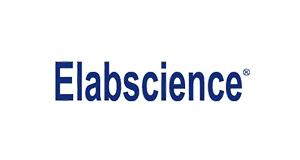Recombinant CD5/Cluster of Differentiation 5 Monoclonal Antibody
Recombinant CD5/Cluster of Differentiation 5 Monoclonal Antibody
Artikelnummer
ELSAN300003P-100
Verpackungseinheit
100μL
Hersteller
Elabscience Biotechnology
Verfügbarkeit:
wird geladen...
Preis wird geladen...
Target Synonym: LymphocyteantigenT1/Leu;Lymphocyte antigen T1/Leu;T-cellsurfaceglycoproteinCD;T-cell surface glycoprotein CD;OTTHUMP;LEU;CD5;LEU1;T1;CD 5;CD5 antigen;CD5 antigen (p56 62);CD5 molecule;Leu-1;Ly-1;LyA;LymphocyteantigenT1/Leu-1;OTTHUMP00000236973;T-cellsurfaceglycoproteinCD5;Tp67;T-cell surface glycoprotein CD5;Lymphocyte antigen T1/Leu-1;Tp67;Leu-1;Ly-1;CD 5;CD5;CD5 antigen (p56 62);CD5 antigen;CD5 molecule;CD5;LEU1;LyA;Lymphocyte antigen T1/Leu-1;OTTHUMP00000236973;T-cell surface glycoprotein CD5;T1
Background: CD5, also known as Leu-1, is a type I transmembrane protein belonging to the scavenger receptor cysteine-rich (SRCR) superfamily. It is expressed on thymocytes, T cells and the B1a subpopulation of B cells. CD5 binds the C-type lectin, CD72, and modulates signaling through the antigen receptors on T and B cells. CD5 has been shown to provide either positive or negative co-stimulatory signals depending on cell type to regulate immune responses.
Immunogen: Recombinant Human CD5 / Cluster of Differentiation 5 Protein
Buffer: 0.2 μm filtered solution in PBS
Dilution: WB 1:500-1:1000;
Calculated MW: 55 kDa
Observed MW: 58 kDa
Background: CD5, also known as Leu-1, is a type I transmembrane protein belonging to the scavenger receptor cysteine-rich (SRCR) superfamily. It is expressed on thymocytes, T cells and the B1a subpopulation of B cells. CD5 binds the C-type lectin, CD72, and modulates signaling through the antigen receptors on T and B cells. CD5 has been shown to provide either positive or negative co-stimulatory signals depending on cell type to regulate immune responses.
Immunogen: Recombinant Human CD5 / Cluster of Differentiation 5 Protein
Buffer: 0.2 μm filtered solution in PBS
Dilution: WB 1:500-1:1000;
Calculated MW: 55 kDa
Observed MW: 58 kDa
| Artikelnummer | ELSAN300003P-100 |
|---|---|
| Hersteller | Elabscience Biotechnology |
| Hersteller Artikelnummer | AN300003P-100 |
| Verpackungseinheit | 100μL |
| Mengeneinheit | STK |
| Reaktivität | Human |
| Klonalität | Recombinant |
| Methode | Western Blotting |
| Isotyp | IgG |
| Wirt | Rabbit |
| Konjugat | Unconjugated |
| Produktinformation (PDF) |
|
| MSDS (PDF) |
|

 English
English







